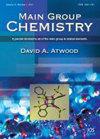大理石废料制备羟基磷灰石纳米颗粒的抗菌活性研究
IF 1
4区 化学
Q3 CHEMISTRY, MULTIDISCIPLINARY
引用次数: 0
摘要
本工作旨在利用大理石废弃物(利用建筑大理石废弃物减少环境污染危害)制备羟基磷灰石(HAP)纳米材料并对其进行表征,并研究其作为抗菌和抗真菌剂的性能。利用大理石废料作为氯化钙的来源,与磷酸氢钠反应,合成羟基磷灰石纳米颗粒,利用x射线衍射(XRD)、扫描电子显微镜(SEM)和能量色散x射线分析(EDAX)技术对制备的材料进行表征、测试和分析。制备的羟基磷灰石纳米材料用不同类型的细菌(革兰氏阴性):埃希氏菌进行了抗菌活性测试。大肠杆菌、副伤寒沙门氏菌、土绿假单胞菌、水藻藻和细菌(革兰氏阳性):金黄色葡萄球菌和肺炎链球菌。研究了HAP纳米颗粒对不同种类黑曲霉、黄曲霉和青霉SP的抑菌效果。抑菌带的直径表明,在100% DMSO浓度下,HAP纳米颗粒对革兰氏阳性金黄色葡萄球菌和肺炎链球菌的抑菌效果较好。与其他类型细菌相比,抑菌圈直径为3.70 mm。抑菌区直径显示了该微生物对HAP纳米颗粒的敏感性,在100% DMSO浓度下对青霉菌SP的抑菌效果较好,抑菌区直径为2.20 mm,与其他黑曲霉和黄曲霉真菌相比。根据已获得的结果,由大理石废物制备的HAP纳米颗粒对革兰氏阴性(大肠杆菌)和革兰氏阳性(金黄色葡萄球菌)菌株均有抗菌作用。本文章由计算机程序翻译,如有差异,请以英文原文为准。
Antimicrobial activity of Hydroxyapatite nanoparticles prepared from marble wastes
This work aims to prepare and characterize the hydroxyapatite (HAP) nanomaterials from marble wastes (the utilization of the building marble waste for reducing the environmental pollution hazards) and to study its capabilities as antimicrobial and antifungal agents of the prepared nanoparticle. The utilization of the marble waste as a source for calcium chloride and to be reacted with sodium hydrogen phosphate, for synthetization of hydroxyapatite nanoparticles, the prepared material is characterized, tested, and analyzed using X-ray diffraction (XRD), Scan Electron Microscope (SEM) with Energy Dispersive X-Ray analysis (EDAX) techniques. The antimicrobial activity of prepared hydroxyapatite nanomaterial is tested using a well diffusion method with different types of bacteria (Gram-negative): Escherichia. Coli, Salmonella paratyphi, Pseudomonas earuginosa, and Alcaligenes aquatilis and bacteria (Gram- positive): Staphylococcus aureus, and Streptococcacea pneumonia. The antifungal efficacy of HAP nanoparticles is tested for different species of Aspergillus niger, Aspergillus flavus, and Penicillium SP. The diameter of the inhibitory zone shows the sensitivity of the microorganism to HAP nanoparticles in a greater inhibition against Gram- positive Staphylococcus aureus and Streptococcacea pneumonia, at 100% DMSO concentration. The diameter of the inhibition zone was 03.70 mm, when compared with other types of bacteria. The diameter of the inhibitory zone showed the sensitivity of the microorganism to HAP nanoparticles in a greater inhibition against Penicillium SP at 100% DMSO concentration, the inhibition zone diameter was 2.20 mm, when compared with other Aspergillus niger and Aspergillus flavus fungal species. Based on obtained results for the HAP nanoparticles prepared from the marble wastes have antibacterial effects on both Gram-negative (E. coli) and Gram-positive (S. aureus) strains.
求助全文
通过发布文献求助,成功后即可免费获取论文全文。
去求助
来源期刊

Main Group Chemistry
化学-化学综合
CiteScore
2.00
自引率
26.70%
发文量
65
审稿时长
>12 weeks
期刊介绍:
Main Group Chemistry is intended to be a primary resource for all chemistry, engineering, biological, and materials researchers in both academia and in industry with an interest in the elements from the groups 1, 2, 12–18, lanthanides and actinides. The journal is committed to maintaining a high standard for its publications. This will be ensured by a rigorous peer-review process with most articles being reviewed by at least one editorial board member. Additionally, all manuscripts will be proofread and corrected by a dedicated copy editor located at the University of Kentucky.
 求助内容:
求助内容: 应助结果提醒方式:
应助结果提醒方式:


